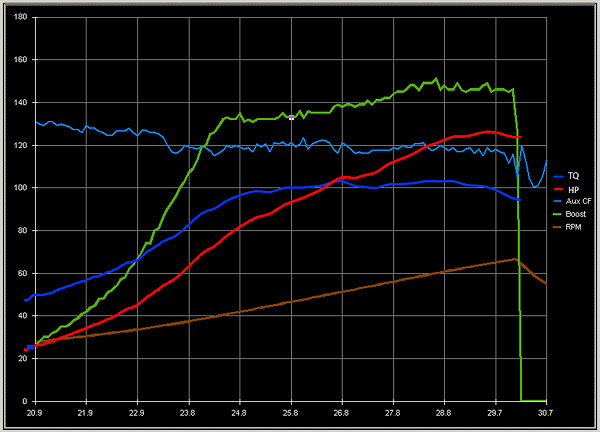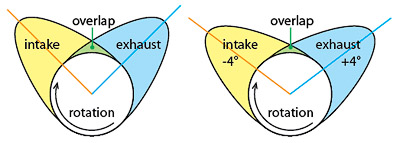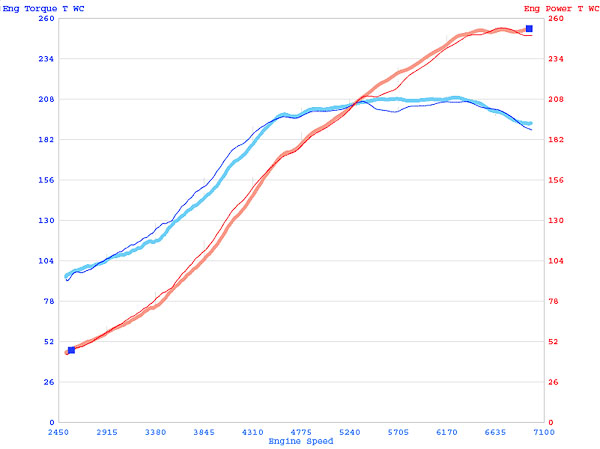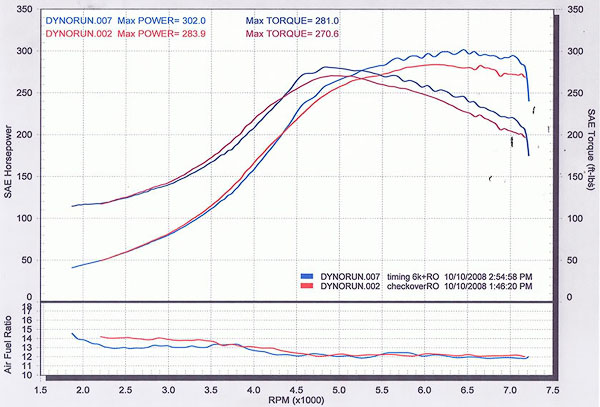Adjustable Cam Gears – Adjusted, Barely
 0 comments
0 comments
 Adjustable cam gears provide a simple means to optimize normally aspirated cams for boost.
Adjustable cam gears provide a simple means to optimize normally aspirated cams for boost.
The local Miata group had a dyno day on a Mustang Dyno – three runs for cashmoney. I decided I’d play with my new Fidanza adjustable cam gears by adjusting the overlap and check power changes. I first made a baseline pull with stock cam timing for a baseline to measure the changes against.
Stock cam timing datalog:

Next cam overlap was increased resulting in a power loss throughout the entire pull. I then decreased overlap by advancing the exhaust 2° crank (1 tick mark on the cam gear) and retarding the intake 2°. This creates a larger separation between the two valve train action (intake and exhaust.) The graphic below shows a 4 cam-degree retard on the intake and 4 cam-degree advance on the exhaust reducing overlap.

The last run of less overlap made more power with less boost, while in target boost. It suffered a small loss in power at low boost during spool and hit target about 100rpm later.
Intake -2°, Exhaust +2° – note more power and less boost

The Mustang Dyno runs above overlaid (fat lines are decreased cam overlap)

That was a start, but looks like there’s far more to do with more dyno time given the typical overlap present in OE normally aspirated cams and the amount to dial out for boost.
Dynojet pull to show the difference in power curves vs. the above from a Mustang dyno. The only two things changed between these were installing a straight through magnaflow in place of restrictive turbo style muffler and the boost levels: dynojet ~16.5 psi average, mustang ~13.75 average after target.

You must be logged in to post a comment.
« Radiators: Out with the old, in with the new. Next Post








